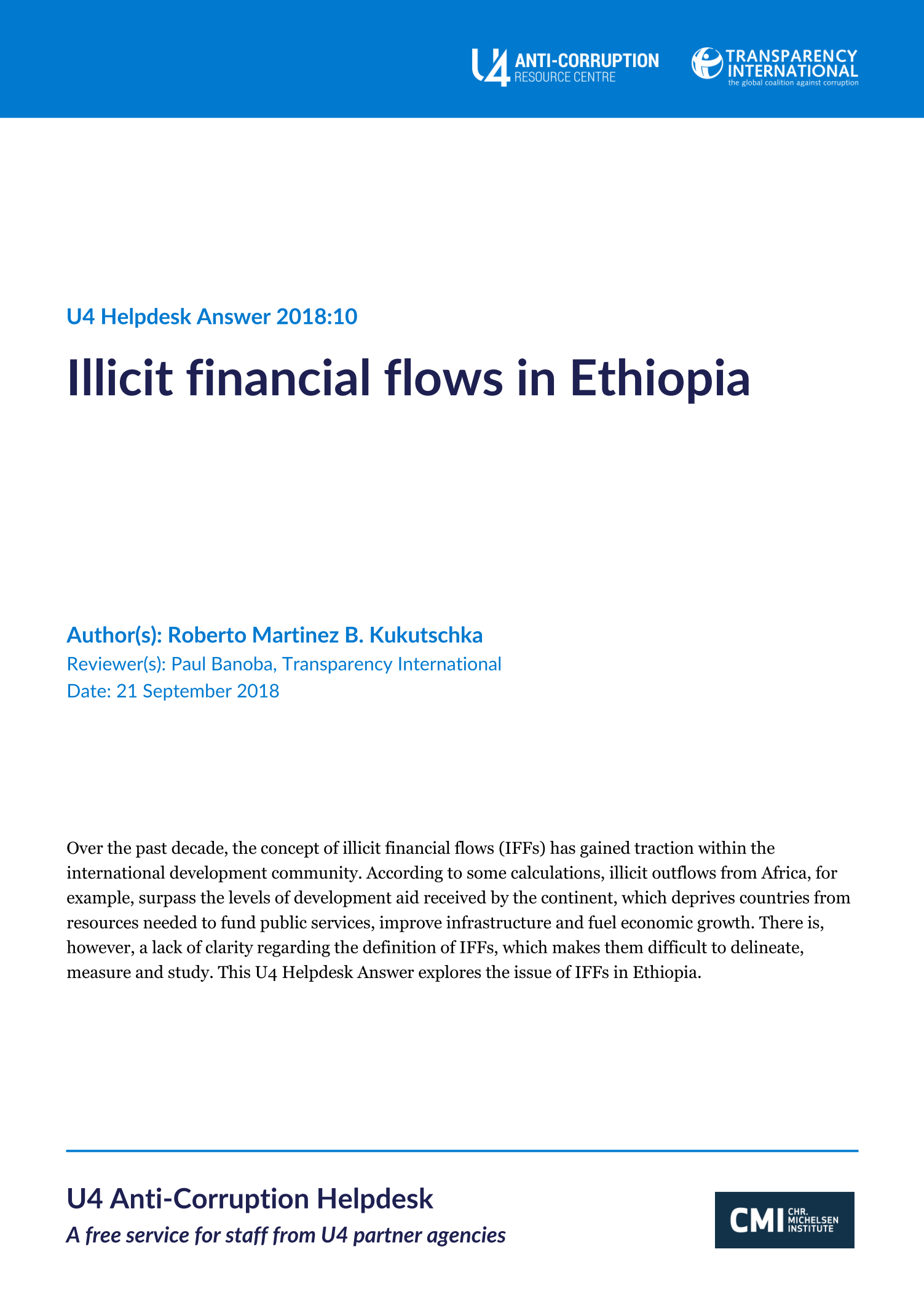Main points
- According to GFI’s estimations, between 2005 and 2014, an estimated average of US$1,259 million to US$3,153 million dollars left Ethiopia as IFFs every year.
- IFFs in Ethiopia have led to an average loss in GDP growth of 2.2% per year.
- Data from Global Financial Integrity shows that between 55 and 80% of the illicit financial outflows leaving Ethiopia originate through trade mis-invoicing.
- Ethiopia’s response to curb IFFs has been largely based on a legal approach, which has proven difficult to implement in practice.


